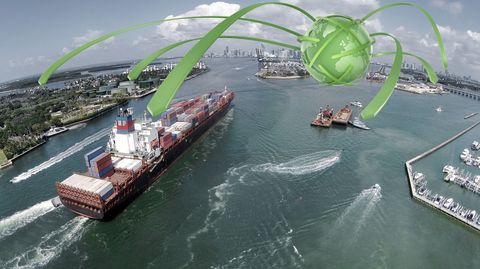China has become a market of crucial importance to businesses that trade overseas in recent decades, with the Asian superpower continuing to grow in stature as the world's second-largest economy.
This has created numerous opportunities for savvy organizations, but also challenges due to the differences in regulatory approach taken by the Chinese government. The nation has traditionally aimed to exert a large degree of control over the way trade is handled, with overseas companies selling goods to China often encountering administrative hurdles as a result.
The country's focus on import control has often contrasted with the relative lack of regulatory attention paid to export laws, but this is all set to change with the recent publication of China's new draft Export Control Law. This legislation will bring the country closer in line with export control regimes seen in other parts of the world, and could affect both domestic and international businesses.
An overview
The new law is set to be China's first piece of legislation specifically addressing export controls, and is expected to introduce a new system of control that protects the country's national security and consolidates its non-proliferation efforts.
It will apply a series of new export qualification requirements, licensing requirements and comprehensive control requirements covering a number of categories of sensitive items, in addition to new mechanisms to implement penalties, embargoes, blacklists and retaliatory measures against businesses or nations found to be contravening the rules.
China's government has determined that current regulations have only a weak legal authority and have not been properly updated since 2007, meaning the system is unable to support enforcement actions in practice. It is expected that the new laws, which will be discussed in earnest by Chinese lawmakers in 2018, will help to address this.
What will be controlled?
The organizations that will feel the impact of the Export Control Law most directly are those engaged with the trade and transportation of military, nuclear items and "dual-use" items, as well as anything that may be deemed to have national security implications.
Dual-use items are defined as any goods, technologies, or other items that have
civil uses, but may also have potential militaristic applications, especially in the design, development, production or use of weapons of mass destruction. It should be noted that this applies not only to tangible goods, but also intangible items such as tech innovations and services.
A Dual-Use Items Control List and Munitions Control List will be compiled and regularly updated by Chinese regulators, so businesses involved in these sectors will need to keep themselves abreast of developments as they occur, and ensure they possess the proper licenses to maintain compliance.
What penalties will be introduced?
Businesses that fail to comply with the new legislation could find themselves facing considerable financial penalties, or possibly even criminal prosecution.
Depending on the severity of the violation, exporters could face a fine of up to ten times the value of the illegal turnover, as well as the confiscation of the illicit goods and the suspension or revocation of the relevant licenses. Personal fines of up to RMB 300,000 (€38,930) could also be on the cards for those found to be directly responsible.
Additionally, penalties will be imposed on those obtaining licenses fraudulently or obstructing investigations, with violators likely to see their information added to the national credit system database and made public, making it hard for them to obtain export licenses for years to come.
How should businesses prepare?
As such, it is essential that any companies operating in China or working closely with Chinese partners make themselves aware of the progress of the draft legislation over the coming months, and to plan accordingly.
Although the wording of the law may be tweaked as different lawmakers offer their input, businesses should at least be readying themselves for the prospect of new regulatory requirements, additional paperwork, stricter licensing review processes and possible on-site inspections, and putting aside resources to account for these changes.
By keeping up to date with the development of the Export Control Law as it unfolds, businesses can ensure they are ready for the transition as soon as it takes place, providing them with a key competitive advantage and helping to maintain compliance with the laws of one of the world's most vital and lucrative markets.






